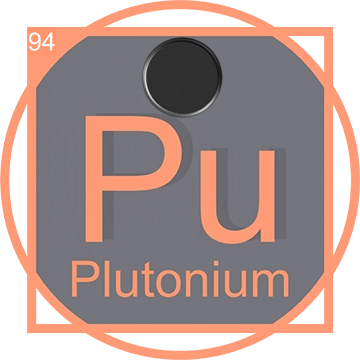Introduction to Fermium
Fermium, with the chemical symbol Fm and atomic number 100, is a synthetic and highly radioactive element. Part of the actinide series in the periodic table, Fermium was first discovered in 1952 during the analysis of debris from the first hydrogen bomb test.
Discovery of Fermium

Fermium was identified by a team of American scientists at the Lawrence Berkeley National Laboratory. It was named after Enrico Fermi, a pioneering physicist known for his work on nuclear reactions and quantum theory. The discovery was significant not only for its method—synthesis from nuclear reactions—but also for its implications in nuclear chemistry and physics.
Position in the Periodic Table
Fermium is located in the actinide series of the periodic table, typically found in the f-block. This positioning highlights its electron configuration and similarities with other actinides, which are key to understanding its chemical behavior and potential reactivity.
Scientific Significance
The synthesis of Fermium has provided scientists with valuable insights into the complex behaviors of heavy atomic nuclei and the theoretical "island of stability" in superheavy elements. Its study helps expand our understanding of atomic and nuclear physics.
Applications in Technology

While Fermium itself has no significant commercial applications due to its radioactivity and scarcity, research involving Fermium has led to advancements in nuclear science and materials research. Scientists explore its potential use in targeted cancer treatments and in understanding nuclear fission processes.
Conclusion
The study of Fermium continues to be crucial for advancing our knowledge of nuclear reactions and the limits of the periodic table. Even without direct practical applications, the insights gained from Fermium research influence various scientific and technological fields.
How Fermium is Synthesized
Fermium is not found naturally and is synthesized in particle accelerators through a process called neutron capture, followed by beta decay. This involves bombarding lighter elements like uranium or plutonium with neutrons to produce heavier elements, which through successive neutron captures and beta decays, eventually form fermium.
Mining and Associated Resources
As a synthetic element, Fermium is not mined from any natural sources. The primary materials used in its production, such as uranium and plutonium, are extracted from mineral ores found in specific types of geological formations.
Fermium in it's purest form

Here is a conceptual visualization of Fermium in its purest form. The image depicts Fermium as a solid, heavy metal with a radiant silvery appearance, emphasizing its metallic sheen and dense structure.
This artistic representation conveys the theoretical physical appearance of Fermium, highlighting its characteristics as a heavy actinide in the periodic table.
Current Applications
Today, Fermium has no significant commercial applications due to its extreme radioactivity and limited availability. It is primarily used in scientific research, particularly in the fields of nuclear physics and chemistry, where researchers study its properties to gain insights into the behavior of heavy elements.
Future Prospects

The future of Fermium could be promising in the realm of synthetic materials and advanced nuclear technologies. As scientists continue to explore its properties, potential applications could include new types of radiation sources for medical and industrial uses, or as a catalyst in specialized chemical reactions.
In the image, it imagines machinery made out of Fermium sending a beam of energy, however, this is pure science fiction, but great for the imagination.
Conclusion
While Fermium's practical applications are currently limited, ongoing research and breakthroughs in particle physics may unlock new uses for this fascinating element, contributing to advances in technology and medicine.












